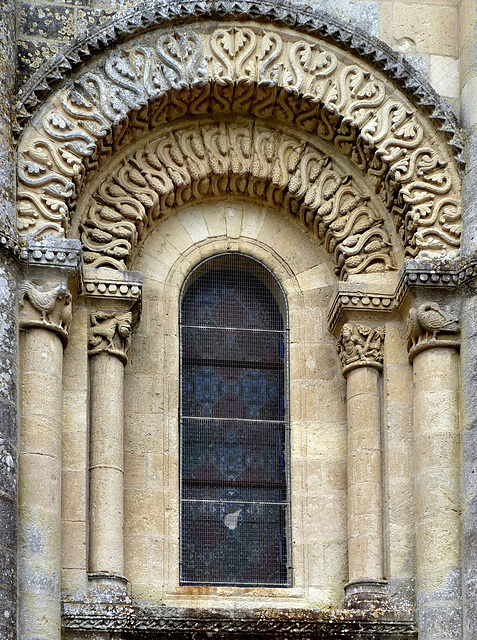Matha - Saint-Pierre de Marestay
Matha - Saint-Pierre de Marestay
Matha - Saint-Pierre de Marestay
Matha - Saint-Pierre de Marestay
Matha - Saint-Pierre de Marestay
Matha - Saint-Pierre de Marestay
Matha - Saint-Pierre de Marestay
Matha - Saint-Pierre de Marestay
Matha - Saint-Pierre de Marestay
Matha - Saint-Pierre de Marestay
Matha - Saint-Pierre de Marestay
Matha - Saint-Pierre de Marestay
Saint-Jean-d’Angély - Michel Louis Étienne Regnaud
Surgères - Notre-Dame
Surgères - Notre-Dame
Surgères - Notre-Dame
Surgères - Notre-Dame
Surgères - Notre-Dame
Surgères - Notre-Dame
Surgères - Notre-Dame
Surgères - Notre-Dame
Surgères - Notre-Dame
Surgères - Notre-Dame
Matha - Saint-Pierre de Marestay
Matha - Saint-Pierre de Marestay
Matha - Saint-Pierre de Marestay
Matha - Saint-Pierre de Marestay
Matha - Saint-Hérie
Matha - Saint-Hérie
Matha - Saint-Hérie
Matha - Saint-Hérie
Matha - Saint-Hérie
Matha - Saint-Hérie
Matha - Saint-Hérie
Matha - Saint-Hérie
Matha - Saint-Hérie
Matha - Saint-Hérie
Matha - Saint-Hérie
Matha - Saint-Hérie
Matha - Saint-Hérie
Authon-Ébéon - Notre-Dame de l'Assomption
Authon-Ébéon - Notre-Dame de l'Assomption
Authon-Ébéon - Notre-Dame de l'Assomption
Authon-Ébéon - Notre-Dame de l'Assomption
Annepont - Saint-André
Location
See also...
Keywords
Authorizations, license
-
Visible by: Everyone -
All rights reserved
-
231 visits
Matha - Saint-Pierre de Marestay


There had been a small community of monks here, that end of the 11th century joined the important Benedictian Abbaye royale of Saint-Jean-d'Angély (20kms northwest), that was part of the cluniac network.
The Abbaye royale got wealthy through the thousands of pilgrims on the Via Turonensis. They all stopped to see the relic of John the Baptist, before they continued, and obviously left some coins.
The abbey could afford to build a prestigious abbey church for the monastic comunity in Marestay (now Matha) at the same time, when Saint-Hérie (see previous uploads), just 2kms apart from here, was erected. Probably the same monks, lay brothers and workers toiled on two construction sides in long double shifts.
During the Wars of Religion many curches within the whole area got ruined and mutilated. In Saint-Herie, 2kms south, only two walls of the Romanesque church are still in place. Here the complete nave is missing.
After the "Edict of Nantes" got revoked in 1685, all Huguenots living in Matha were evicted and exiled. Following that all protestant churches existing in the town got leveled to the ground.
The only parts of Saint-Pierre that survived the incredible fury are the transepts, the crossing and the apse (seen here). Despite this structure is really "short", there is a lot to find, as most elaborate carvings around the apse are untouched.
Here is one of the apse-windows. The masterly carved archivolts have geometric foliage and grapes. The four capitals are populated by (left to right)
- two roosters,
- two harpies with snake-tails and only one bearded head,
- a man, entangled in the forest by vines,
- two ducks, see the feet and the beak.
It may depicts the known world (surface) on the outer capitals and the dangerous, unknown world (underground) on the inner capitals.
The Abbaye royale got wealthy through the thousands of pilgrims on the Via Turonensis. They all stopped to see the relic of John the Baptist, before they continued, and obviously left some coins.
The abbey could afford to build a prestigious abbey church for the monastic comunity in Marestay (now Matha) at the same time, when Saint-Hérie (see previous uploads), just 2kms apart from here, was erected. Probably the same monks, lay brothers and workers toiled on two construction sides in long double shifts.
During the Wars of Religion many curches within the whole area got ruined and mutilated. In Saint-Herie, 2kms south, only two walls of the Romanesque church are still in place. Here the complete nave is missing.
After the "Edict of Nantes" got revoked in 1685, all Huguenots living in Matha were evicted and exiled. Following that all protestant churches existing in the town got leveled to the ground.
The only parts of Saint-Pierre that survived the incredible fury are the transepts, the crossing and the apse (seen here). Despite this structure is really "short", there is a lot to find, as most elaborate carvings around the apse are untouched.
Here is one of the apse-windows. The masterly carved archivolts have geometric foliage and grapes. The four capitals are populated by (left to right)
- two roosters,
- two harpies with snake-tails and only one bearded head,
- a man, entangled in the forest by vines,
- two ducks, see the feet and the beak.
It may depicts the known world (surface) on the outer capitals and the dangerous, unknown world (underground) on the inner capitals.
- Keyboard shortcuts:
Jump to top
RSS feed- Latest comments - Subscribe to the comment feeds of this photo
- ipernity © 2007-2024
- Help & Contact
|
Club news
|
About ipernity
|
History |
ipernity Club & Prices |
Guide of good conduct
Donate | Group guidelines | Privacy policy | Terms of use | Statutes | In memoria -
Facebook
Twitter

Sign-in to write a comment.